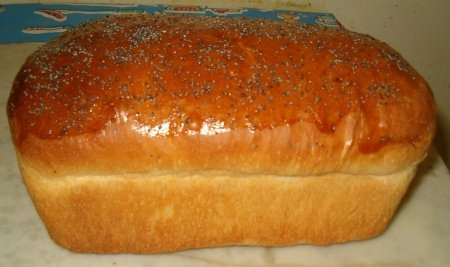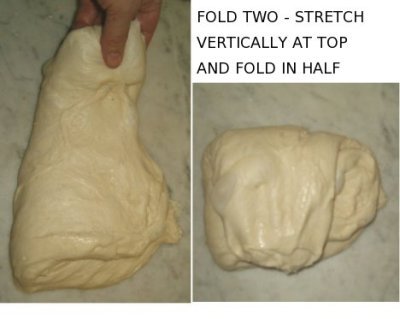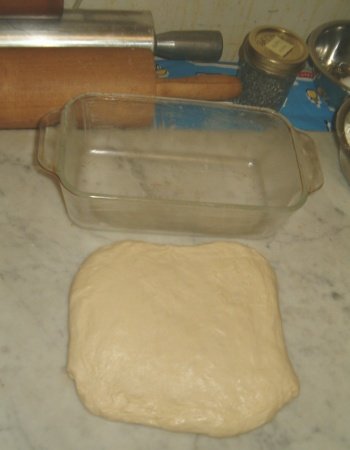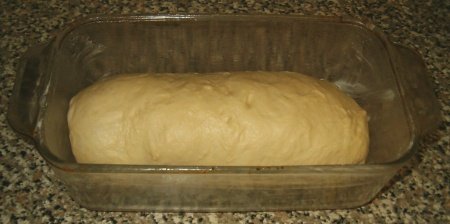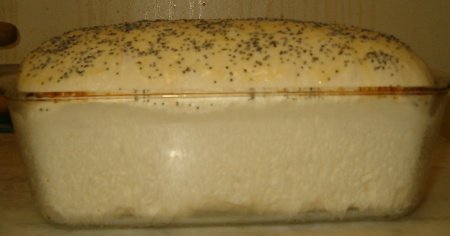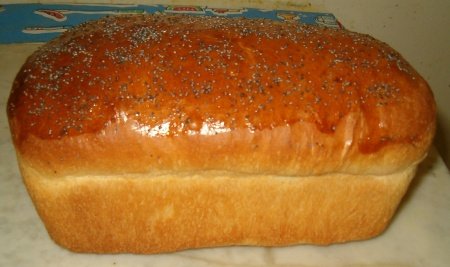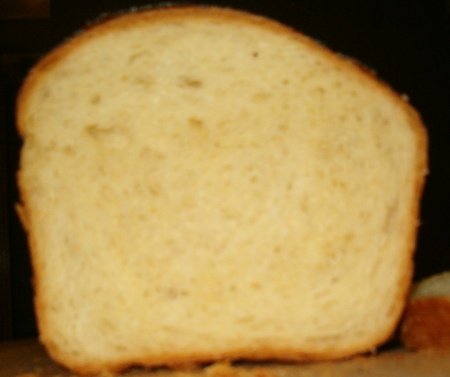Buttermilk White Bread - part 3 - Instructions (mixing & kneading)
My
post #9 gave the ingredients and discussed measuring. We now proceed to...
[SIZE=+2]Instructions (mixing & kneading)[/SIZE]
The buttermilk and shortening were weighed and they, along with the beaten egg, were allowed to hang out at room temperature, since flour has trouble absorbing cold ingredients.
The dry ingredients were added to the KA mixer bowl (the flour was weighed, I just used my measuring spoons for the other dry ingredients).
Using the flat beater on speed 2, the dry ingredients were mixed for about 1 min, and then the wet ingredients were added (still beating on speed 2) in this order
- buttermilk
- beaten egg
- shortening
and everything was mixed for 1-2 min until it all balled up in the paddle. I then scraped the dough off the paddle, and switched to the dough hook. At this point the dough was rough but soft enough that it certainly didn't strain the motor to mix it with the paddle. It looked like this
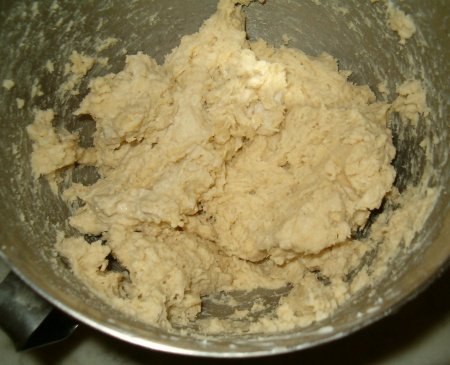
This dough was kneaded with the dough hook for 5-6 minutes on speed 2. It did ball on the hook and at the end of the mixing period looked like this
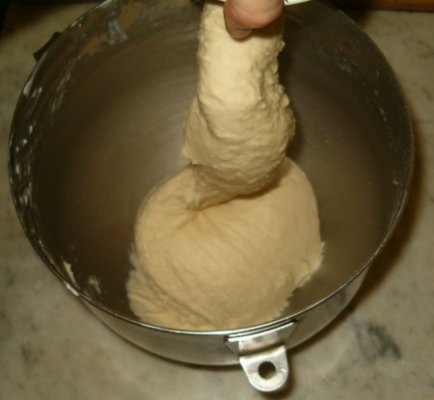
The dough was removed from the bowl to a *lightly floured* board for final hand kneading.
We now come to an interesting point. Remember, I made this recipe 2 times, one day apart. The ingredients (including brands), the temperature (low 70s F) and procedure were identical on both days, however,
dough #1 was actually stickier than dough #2 (of course, didn't know that on day one when I was making it for the first time

).
I did notice that dough #1 was a little sticky (it really gripped the board) but instead of adding more flour while kneading (this was the first time I'd made the recipe and I didn't know how the dough should actually
feel) I covered it with plastic wrap and let it rest on the board for about 30 minutes. Sometimes flour just needs time to absorb wet ingredients.
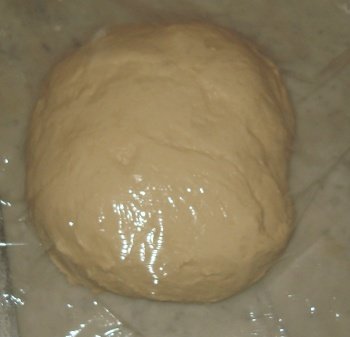
After this resting period, the dough was firmer and I could hand knead it without having to add flour beyond a tiny amount (?maybe 2 tsp) on the board. I hand kneaded for about 3 minutes.
It turns out that dough #1, even with this resting period, was still slightly wetter than dough #2 after both had been kneaded by machine and then a few minutes more by hand. Look at the photo below (in both cases I'm just lifting the rounded ball of dough up off the board)
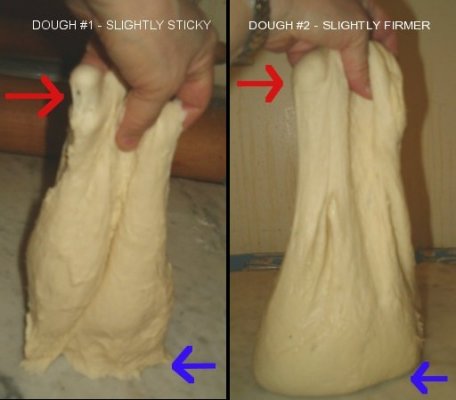
The blue arrow in #1 shows the dough gripping the board while in #2 the dough remains rounded. The red arrow in #1 shows the dough starting to tear away from my fingers while in #2 its still holding. I could lift dough #2 off the board without it leaving a residue.
The most likely cause of the difference in the doughs is that the wet ingredients were still somewhat cold the first time and even the resting period didn't fully correct this. A 2nd possible cause is that I *may* have machine kneaded dough #2 slightly longer.
At any rate, it made little difference in the final bread. Both baked up fine. Just wanted to point up how small differences in procedure and technique can affect the dough.
The kneaded dough is soft, light, and slightly tacky, just the way the recipe says it should feel. Both doughs passed the
windowpane test.
We've reached the end of the discussion of kneading. Stay tuned for part 4 which covers rising times, shaping and baking.



